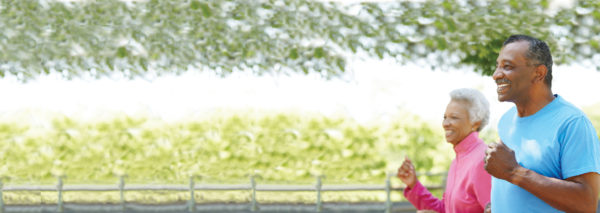
by Dr. Bill Thomas
A professor in Japan spent decades building robots that look human. Despite perfecting the hair, skin and eyes, his robots fooled no one. As he dug deeper he discovered the real problem: His robots sit perfectly still. Humans don’t do that. We move all the time. We sigh. We shift our weight. We tap our toes and drum our fingers. The professor is now hard at work creating a robot that fidgets.
Moving is essential to the health and well-being of humans at every age. We find a natural delight in the clumsiest movements of babies and laugh when they pump their little arms and legs. We applaud when toddlers waddle toward us and laugh along with them when they go “Boom!” Everyone knows that falling down is an important part of learning to walk. As children get older they learn to play, and play always requires some kind of movement. That’s why we build playgrounds, give kids recess periods at school and organize sports teams. We do all this because we understand that, in order to be healthy, children need to move.
Adults have plenty of reasons to move as well. Farmers, nurses, carpenters, letter carriers, and teachers are moving all day long. I even see business executives running through the airport desperately trying to catch their flight. For most people the need to make a living ensures that they get up and get moving every day.
As we get older many of us run out of reasons to keep moving.
Medical science has shown that being sedentary is dangerous to our health. When I was a young physician I routinely advised my patients to exercise every day. Very few of them followed my advice. Sir Isaac Newton explained the reason for this centuries ago when he said, “An object at rest tends to stay at rest.” People who are sedentary tend to remain sedentary and the reality is that very few people start to exercise just because a doctor told them to do so.
As I’ve gotten older, I’ve learned a thing or two about our lifelong need to move. First, and most importantly, I now understand that people tend to remain sedentary until they find a good reason to move. In our society, the main reason people choose to move is related to either work or play. Of course, many people living in the later decades of life do not want or need a job, whether paid or volunteer. Consequently, the best approach to get moving when we are older is to begin to playing again. To be clear, “play” does not have to mean “sports and exercise.” It can be whatever we want it to be as long as its something we enjoy. Why? Because people who play every day will move every day.
The best approach follows this simple rule: “Start low and go slow.” Doctors often use this rule when prescribing medicine to older people and it applies to movement as well. A little bit of daily movement is much better, and more fun, than a whole lot of movement once in a while. The journey to taking 10,000 steps a day begins slowly.
Newton’s First Law also holds that “An object in motion tends to stay in motion.” To this I would like to add Dr. Thomas’ Second Law: “Grab hold of a reason to move, start slow, and, very soon, momentum will be on your side.” We are born to move and doing so makes us stronger, grants us better health and fosters well-being.



